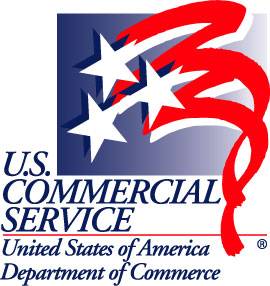The growing worldwide demand for marine technologies, port construction and shipbuilding is generating new export opportunities for U.S. companies. As more firms look to boost their bottom line by maximizing their reach to the more than 95 percent of world consumers who live outside of the United States, many are taking advantage of numerous export resources along the way. At the same time, many other businesses have yet to export.
International Trade Specialist Maryanne Burke leads the U.S. Commercial Service’s Marine Technology Team, and is based at the Boston U.S. Export Assistance Center, part of the U.S. Commercial Service’s global network of offices located in more than 100 U.S. cities and U.S. Embassies and Consulates in more than 75 markets. In the below Q&A, Burke shares some boots-on-the-ground insights for U.S. marine tech firms looking to sell globally.
Why should U.S. marine tech companies consider exporting, or expanding their current global sales?
More than 95 percent of the world’s consumers are outside of the United States, so if a company is not exporting, it’s like leaving money on the table. Exporting can help grow a company’s bottom line, smooth its business cycle, and help buffer changes in the global economy while increasing its worldwide competitiveness. If your company is not exporting, it’s highly likely your competitors are exporting or will be soon.
What are some export opportunities in marine technology industry?
Several strong trends in the marine technology sector offer opportunities for U.S. companies. Among these are maritime defense and security, shipbuilding, ocean observation and data management, oil and gas exploration and port infrastructure and services. The following are just a few examples:
•According to the Global Trade Atlas, U.S. exports of ships, boats and floating structures totaled more than $2 billion in 2015, with Canada, Egypt and Mexico the top three export markets for these U.S. products.
•Colombia has launched a key initiative to expand cargo patios and container areas to include a $250 million project for Buenaventura, a $180 million project for Barranquilla and a $100 million project for Santa Marta. Another project involves $1 billion dollar investment for a 600-mile dredging project of the Magdalena River connecting the center of Colombia to the Port of Barranquilla.
•India expects traffic at major (federal) ports to grow from 561 million tons in 2010 to 1.2 billion tons by 2020, and traffic at minor (state and private) ports from 289 million tons to 1.2 billion tons in that same decade. India’s 12th Five-Year Plan (2012-2017) calls for about $28 billion to be invested in the port sector to include new terminals, inland water systems, upgrades of existing berths and modernization of operations. The Ministry of Shipping has also launched ‘Project Green Portswhich will help in making the major ports across India cleaner and greener. A major element of the initiative will require the latest in environmental and energy-related technologies.
•Port development projects will also require marine technologies such as security, logistics, vessel tracking, oil spill detection and contingency preparedness, dredging, underwater exploration and mapping, among other goods and services.
•The Netherlands, home to Europe’s Marine Equipment Trade Show, offers solid growth opportunities for pleasure boats, electronic charting, versatile screen displays and interfacing. It’s also a good market for super yacht suppliers, sailing boats and parts and “green solutions.”
Many of these opportunities can be found in our U.S. Country Commercial Guides. In addition, our U.S. Commercial Service Marine Technology Team is working with many companies in the pursuit of Arctic expansion and economic opportunities for oil and gas deposits, shipping and infrastructure. Examples of top market opportunities include countries such as Japan, United Kingdom, Norway and Singapore. Japan has special interests in marine-earth sciences and accompanying technology, as well a fast-growing defense industry; the United Kingdom is a leader in marine renewables, a sector that offers well-established firms and partnering opportunities; Norway is interested in deepwater technology; and Singapore is experiencing increased demand for oil and gas exploration and offshore support vessels.
Our U.S. Commercial Service team continues to receive trade leads from all around the world: a tender from Jordan needing consultants for the Red Sea/Dead Sea Project; and several tenders from the Government of Canada looking for various mapping instruments and data collection technologies among the most recent. Feel free to get on our Marine Technology Team email list (on our website) for news of the latest opportunities.
Do U.S. marine tech firms have a competitive edge vs. the international competition in the global marketplace?
U.S. infrastructure and technology is world-class, and U.S. companies have an excellent reputation for quality and after-sale service. Another advantage is that much of the scientific and cutting-edge ocean technology research originates from the United States, providing a strong base for export sales. Furthermore, the sheer size and scope of the broader U.S.-based marine-related industry is impressive, and much of its revenue is generated through exports as well. According to a NOAA Office of Coastal Management report issued in 2015, the U.S. Ocean and Great Lakes economy accounted for 147,000 business establishments, 2.9 million employees, $113 billion in wages and $343 billion in gross domestic product in 2012. Three of the six economic sectors covered in the study were marine transportation and construction, offshore mineral extraction and ship/boat building.
The United States also is a strong exporter of ocean-related scientific equipment. A recent NOAA study on The Ocean Enterprise looked at for profit and non-profit businesses; providers of ocean measurement, observation and forecasting infrastructure, as well as intermediaries—all of which are critical to maritime commerce and the blue economy. The report notes that exports accounted for $1.4 billion or 20 percent of the estimated $7 billion of maritime revenues attributable to Ocean Enterprise business activities in 2014.
What are some challenges in selling internationally?
One of the biggest challenges is encouraging smaller companies to consider their export possibilities. It’s not uncommon to hear U.S. companies say, “My business is too small to go global.” The reality is that exporting has become more viable than ever for even the smallest businesses thanks to the Internet, improved logistics options and the array of federal government export assistance available.
If a U.S. company has a good track record of selling in the United States, one of the world’s most open and competitive markets, there’s a high probability that firm has good export potential. Sometimes companies also worry that “the paperwork is too complicated” and “licensing takes too long.” There is also plenty of export assistance available through the U.S. Government and partner resources to make the process easier.
Additionally, trade finance and global banking have evolved to the point where buying and selling things internationally is routine, safe and efficient with programs offered by the Export-Import Bank of the United States and the Small Business Association.
What are some recommendations on how to best pursue international opportunities?
A great place to start is by contacting your local U.S. Export Assistance Center (USEAC), part of our worldwide U.S. Commercial Service. This seamless network includes 108 U.S. offices and locations at U.S. Embassies and Consulates in more than 75 markets. Trade specialists can help determine the best approach for your company’s objectives by developing a customized export strategy that identifies priority markets with the strongest potential for export success. Services are wide-ranging: export counseling; customized market research; matchmaking services; in-country promotion of products or services; commercial diplomacy and advocacy. Many companies leverage U.S. Commercial Service participation in relevant trade events, export seminars and conferences. We connect companies to other federal and state agencies that can assist with export licensing, export financing and export controls. Also, companies are encouraged to read our publications and online resources, such as A Basic Guide to Exporting. The book, a widely-read “Export 101” resource, debunks export myths and takes readers through the export process in 19 easy-to-follow chapters. For more information on our events and services visit the Marine Technology Team at
http://www.export.gov/industry/marine/.
Tips for Marine Technology Exporters
•Take advantage of trade shows to make connections, and let people know you will be there in advance.
•Be prepared to do your due diligence by knowing your customer and their end-use, understanding the local regulations; relying on local distributors for information and being aware of export controls and licensing requirements.
•One way to achieve lower tariffs is through free trade agreements and multilateral agreements:
-The Trans-Pacific Partnership (TPP) could see significantly lower tariffs in Vietnam, Malaysia and New Zealand for boats and other marine equipment. In addition, the Transatlantic Trade and Investment Partnership (TTIP) could help balance tariffs with the EU, the second largest market behind Canada.
-TPP and T-TIP may also benefit U.S. manufacturers by achieving greater convergence of standards which are often a significant barrier to entry into overseas markets.
•U.S. Government Country Commercial Guides are valuable tools for obtaining the latest on market intelligence in a variety of industry sectors.
•Get the latest on protecting your intellectual property protection rights.
•Take advantage of U.S. Commercial Service resources and marine technology trade events by visiting the Marine Technology Team website.
Export Success Story: DSC Dredge, LLC
DSC Dredge, LLC (DSC), of Reserve, La., is a designer and manufacturer of portable dredges. Its products include standard cutter suction dredges, underwater pump mining dredges and custom dredge designs to meet specific project conditions.
Last year, DSC opened up a new market in Egypt with sales of its Wolverine Class Dredges, adding to its long list of export markets.
In 2011, DSC participated in a Louisiana Trade Mission to Israel certified and supported by the U.S. Department of Commerce (DOC) and organized by the Southwest Louisiana Economic Development Alliance. Through the DOC’s U.S. Commercial Service at the U.S. Embassy in Israel, DSC representatives met one-on-one with prescreened, preselected Israeli companies. This business matchmaking success led to a commercial agreement with an Israeli company.
In 2013, DSC participated in a DOC trade mission to the Philippines, Malaysia and Thailand, where it was introduced to prospective partners through U.S. Commercial Service business matchmaking services. As a result, DSC signed a representation agreement with pending sales to the Philippines.
DSC continues to take advantage of the U.S. Commercial Service offices in New Orleans and worldwide in leveraging export programs, trade shows, market research and business matchmaking. To date, this assistance has directly led to sales to the United Arab Emirates, Mexico, Canada, Nigeria, Guatemala and other countries.
Bob Wetta, CEO of DSC, has expressed appreciation towards the DOC, “for all they do to facilitate our expansion into foreign markets. Their help has enabled us to dramatically increase our export sales, increase revenue and hire many new workers to meet the demands of the global market.”
DSC is also a previous Presidential “E” Star Award recipient.




















